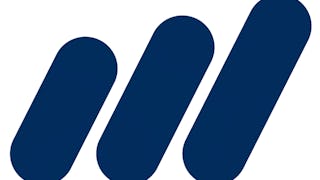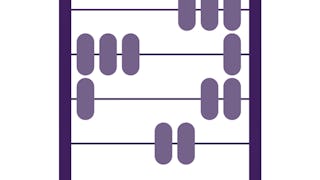The value of all the gold in the world is $25 trillion – yet very few investors have gold in their portfolios. Ironically, gold is the oldest financial asset, but it is poorly understood and under-researched. There are many stories about gold, but very little evidence. This course provides the evidence. After completing the course, you will understand how gold performs during equity market turmoil and during inflation surges and its role in a diversified portfolio. The course explores the reasons why the gold price has recently surged by focusing on the financialization of gold, central bank accumulation, de-dollarization efforts, questions about the status of the U.S. dollar as a reserve currency, and the potential demand shock if gold is classified in a future version of Basel III as an asset commercial banks can hold for regulatory purposes (central banks hold gold as a reserve asset and it seems contradictory not to allow commercial banks to do the same). The Golden Dilemma framework is also introduced to credible future price paths for gold. Finally, the long-term prospects for gold are detailed, given expected technological innovations.

Profitez d'une croissance illimitée avec un an de Coursera Plus pour 199 $ (régulièrement 399 $). Économisez maintenant.

(19 avis)
Expérience recommandée
Ce que vous apprendrez
Explore major drivers of gold's rise: financialization, de-dollarization, central bank buying, regulatory shifts, and the dollar's reserve role.
Explain the performance of gold as a safe-haven asset (gold’s returns during equity drawdowns and inflation surges, as well as non-financial crises).
Utilize a framework to evaluate the future price path of gold (weighing gold’s diversification potential vs. its high relative valuation).
Compétences que vous acquerrez
- Catégorie : Capital Markets
- Catégorie : Return On Investment
- Catégorie : Economics
- Catégorie : Financial Analysis
- Catégorie : Supply And Demand
- Catégorie : Financial Regulations
Détails à connaître

Ajouter à votre profil LinkedIn
octobre 2025
4 devoirs
Découvrez comment les employés des entreprises prestigieuses maîtrisent des compétences recherchées

Il y a 4 modules dans ce cours
This module explains why gold has sustained value over centuries by grounding its appeal in physical and institutional properties—durability, scarcity, fungibility, and the absence of single-authority control. We introduce the “golden constant” and evaluate gold’s performance as an inflation hedge, separating its long-term, purchasing-power stability from its short-term volatility. We then analyze gold’s role in diversified portfolios by examining its volatility and its (time-varying) correlations with equities and bonds, drawing out implications for portfolio risk. Finally, we assess the recent drivers of price increases and, using the golden-constant lens, construct plausible future price scenarios.
Inclus
5 vidéos2 lectures1 devoir
This module explains how gold’s price is shaped by supply rigidity (slow, capital-intensive mine responses) and sector-specific demand across jewelry, technology, and investment. It then examines how financialization—via exchange-traded funds and gold-backed stablecoins—has broadened access and intensified demand, weighing the trade-offs between physical holdings and ETF exposure (liquidity, fees, tracking error, and custody risk). Using the “golden constant” framework alongside new empirical evidence, we assess how ETF adoption has influenced real gold prices. We analyze how the “weaponization” of the U.S. dollar and sanctions regimes spur some countries to reduce dollar dependence and de-dollarize, redirecting portfolio demand toward gold. Finally, we evaluate central-bank accumulation—especially by China and Russia—its implications for global reserves, and what this means for future demand and price dynamics.
Inclus
6 vidéos1 devoir
This module examines how the U.S. dollar’s reserve-currency status channels global demand into dollar assets while creating the Triffin dilemma. It then analyzes how bilateral central-bank swap lines, sanctions risk, and deliberate de-dollarization efforts are reshaping reserve strategies and lifting official-sector demand for gold. We review Basel III’s High-Quality Liquid Asset (HQLA) framework—eligibility tests, haircuts, and liquidity horizons—and evaluate the case for classifying gold as Tier 1 HQLA alongside top-quality sovereigns. Finally, we assess the demand and price impact if such a designation were adopted, including likely balance-sheet reallocation by banks and central banks and plausible price paths for gold under alternative adoption scenarios.
Inclus
3 vidéos1 devoir
This module examines how the U.S. dollar’s reserve-currency status channels global demand into dollar assets while creating the Triffin dilemma. It then analyzes how bilateral central-bank swap lines, sanctions risk, and deliberate de-dollarization efforts are reshaping reserve strategies and lifting official-sector demand for gold. We review Basel III’s High-Quality Liquid Asset (HQLA) framework - eligibility tests, haircuts, and liquidity horizons - and evaluate the case for classifying gold as Tier 1 HQLA alongside top-quality sovereigns. Finally, we assess the demand and price impact if such a designation were adopted, including likely balance-sheet reallocation by banks and central banks and plausible price paths for gold under alternative adoption scenarios.
Inclus
5 vidéos1 lecture1 devoir
Instructeur

Offert par
En savoir plus sur Finance
 Statut : Prévisualisation
Statut : PrévisualisationDuke University
 Statut : Essai gratuit
Statut : Essai gratuitCorporate Finance Institute
 Statut : Essai gratuit
Statut : Essai gratuitUniversity of Maryland, College Park
 Statut : Essai gratuit
Statut : Essai gratuitUniversity of London
Pour quelles raisons les étudiants sur Coursera nous choisissent-ils pour leur carrière ?




Avis des étudiants
19 avis
- 5 stars
94,73 %
- 4 stars
0 %
- 3 stars
5,26 %
- 2 stars
0 %
- 1 star
0 %
Affichage de 3 sur 19
Révisé le 30 oct. 2025
Very structured course, rock solid reasoning and data. Loved it (despite already knowing the topic quite well)
Foire Aux Questions
To access the course materials, assignments and to earn a Certificate, you will need to purchase the Certificate experience when you enroll in a course. You can try a Free Trial instead, or apply for Financial Aid. The course may offer 'Full Course, No Certificate' instead. This option lets you see all course materials, submit required assessments, and get a final grade. This also means that you will not be able to purchase a Certificate experience.
When you purchase a Certificate you get access to all course materials, including graded assignments. Upon completing the course, your electronic Certificate will be added to your Accomplishments page - from there, you can print your Certificate or add it to your LinkedIn profile.
Yes. In select learning programs, you can apply for financial aid or a scholarship if you can’t afford the enrollment fee. If fin aid or scholarship is available for your learning program selection, you’ll find a link to apply on the description page.
Plus de questions
Aide financière disponible,





